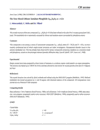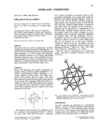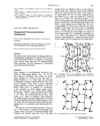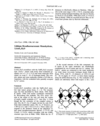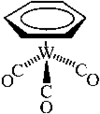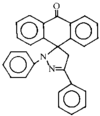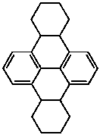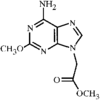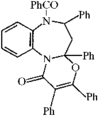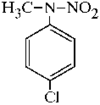issue contents
May 1998 issue

Cover illustration: Lithium Hexafluoroarsenate Monohydrate, LiAsF6.H2O, see Loss & Röhr, pages 567-569. Displacement ellipsoids are shown at the 50% probability level.
cif-access (inorganic compounds)
Download citation


Download citation


The structure of Li8−xTaxP4 (x = 0.5) has been refined in the space group Fm3m [a = 5.999(1)Å]. It has an anti-CaF2 type structure in which the tetrahedral site is statistically occupied by Li and Ta atoms surrounded by P atoms.
cif-access (metal-organic compounds)
Download citation


Download citation


The structure of (C16H36N)2[Mo6O19], originally determined at room temperature [Rheingold et al. (1993). Acta Cryst. C49, 756-758], has been redetermined at 148 K.
Download citation


Download citation


This is a rare example of a trinuclear rhenium–mercury carbonyl cluster complex containing a bridging phosphanido ligand.
Download citation


Download citation


In contrast to related homonuclear complexes, the MnReP2 ring in this complex is not planar and the C6H11 and H groups at both phosphanido bridges are in syn positions.
Download citation


Download citation


This is the first crystallographically characterized dirhenium carbonyl complex to contain one chloro and one phosphanido bridge.
Download citation


Download citation


The structure of lithium bis(trimethylsilyl)amide etherate has been determined at low temperature using improved metrical data.
cif-access (organic compounds)
Download citation


Download citation


In the structure of this compound, inversion-related molecules form O-H⋯O hydrogen-bonded dimers which are linked by C-H⋯O intermolecular hydrogen bonds to form an infinite chain along the b direction. Molecules in different chains are linked by N-H⋯O hydrogen bonds.
Download citation


Download citation


The structure of this compound was redetermined at 150 K in the search for new polymorphs or phase transitions. Like the analogous triphenylphosphonium methylide, only one polymorph is found at low and room temperature. This is in contrast to the selenium compound, which presents a different form at low temperature.
Download citation


Download citation


The centrosymmetric title compound has the six-membered piperazine ring in the expected chair conformation. There are two intramolecular N-H⋯N hydrogen bonds which give rise to a further two six-membered rings.
Download citation


Download citation


This compound exhibits both intramolecular (N-H⋯O) and intermolecular (O-H⋯Br) hydrogen bonding. The latter results in the formation of infinite one-dimensional chains of alternating cations and anions.
inorganic compounds
Download citation


Download citation


(NH4)2Na3(V3W3O19).12H2O is a mixed V/W salt in which each V/W site has an approximately equal population of V and W atoms. The centrosymmetric polyanion consists of six (V/W)O6 edge-sharing distorted octahedra sharing a common vertex.
Download citation


Download citation


The structure of Co(H2O)2Ni(CN)4.4H2O consists of alternating metal cyanide sheets and layers of hydrogen-bonded water molecules.
Download citation


Download citation


LiAsF6.H2O is isostructural with NaPF6.H2O. The structure contains AsF6 octahedra connected by water molecules via weak F⋯H-O hydrogen bonds.
metal-organic compounds
Download citation


Download citation


Download citation


Download citation


Download citation


Download citation


Download citation


Download citation


Download citation


Download citation


Download citation


Download citation


Download citation


Download citation


Download citation


Download citation


Download citation


Download citation


Download citation


Download citation


Download citation


Download citation


Download citation


Download citation


Download citation


Download citation


Download citation


Download citation


Download citation


Download citation


Download citation


Download citation


Download citation


Download citation


Download citation


Download citation


Download citation


Download citation


Download citation


Download citation


Download citation


Download citation


Download citation


Download citation


Download citation


Download citation


Download citation


Download citation


Download citation


Download citation


Download citation


Download citation


organic compounds
Download citation


Download citation


Download citation


Download citation


Download citation


Download citation


Download citation


Download citation


Download citation


Download citation


Download citation


Download citation


Download citation


Download citation


Download citation


Download citation


Download citation


Download citation


Download citation


Download citation


Download citation


Download citation


Download citation


Download citation


Download citation


Download citation


Download citation


Download citation


Download citation


Download citation


Download citation


Download citation


Download citation


Download citation


Download citation


Download citation


Download citation


Download citation


Download citation


Download citation


Download citation


Download citation


Download citation


Download citation


Download citation


Download citation


Download citation


Download citation


Download citation


Download citation


Download citation


Download citation


Download citation


Download citation


Download citation


Download citation


Download citation


Download citation


Download citation


Download citation


addenda and errata
Free 



 journal menu
journal menu











